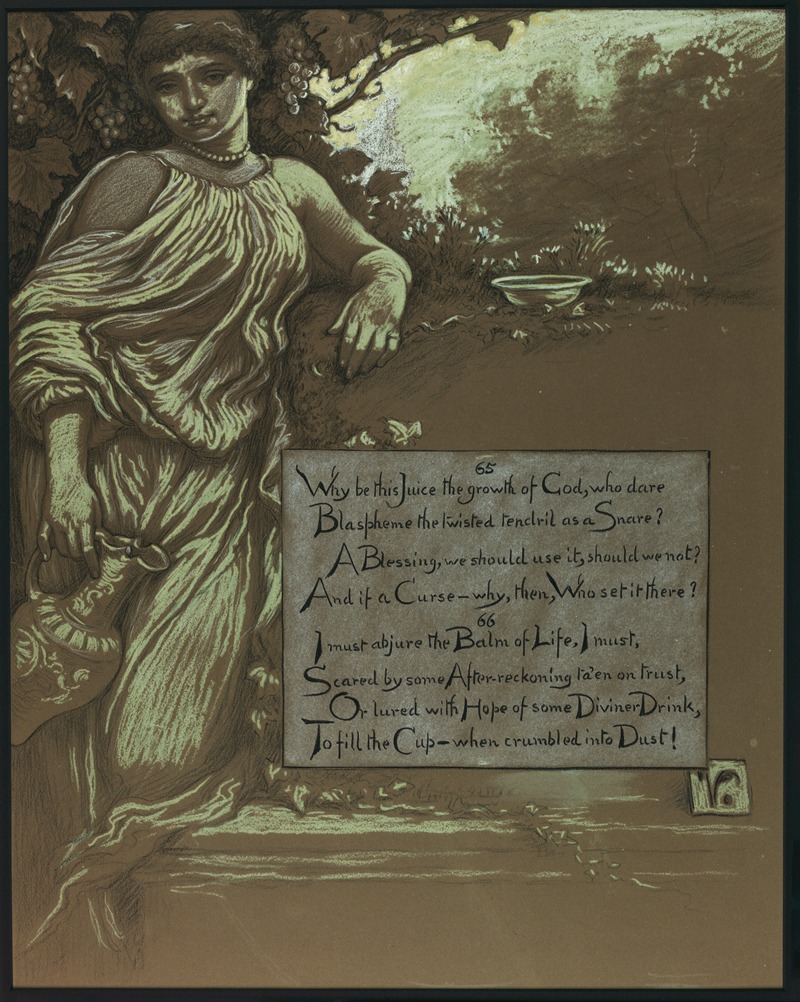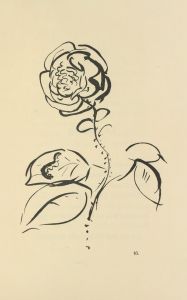
The Vine
A hand-painted replica of Elihu Vedder’s masterpiece The Vine, meticulously crafted by professional artists to capture the true essence of the original. Each piece is created with museum-quality canvas and rare mineral pigments, carefully painted by experienced artists with delicate brushstrokes and rich, layered colors to perfectly recreate the texture of the original artwork. Unlike machine-printed reproductions, this hand-painted version brings the painting to life, infused with the artist’s emotions and skill in every stroke. Whether for personal collection or home decoration, it instantly elevates the artistic atmosphere of any space.
Elihu Vedder was an American symbolist painter, born in 1836 and known for his allegorical and mystical works. One of his notable paintings is "The Vine," which exemplifies his unique style and thematic interests. Vedder's work often explored themes of life, death, and the passage of time, and "The Vine" is no exception.
"The Vine" was created during a period when Vedder was deeply influenced by the symbolist movement, which sought to express ideas and emotions through symbolic imagery and themes. This movement was a reaction against the realism and naturalism that dominated the art world in the 19th century, and Vedder was one of the American artists who embraced its ideals.
In "The Vine," Vedder employs rich symbolism to convey deeper meanings. The vine itself is a potent symbol, often associated with growth, life, and the interconnectedness of nature. In various cultural and historical contexts, vines have been used to represent fertility, abundance, and the cyclical nature of life. Vedder's depiction of the vine may draw on these associations, inviting viewers to contemplate the complex relationships between humanity and the natural world.
Vedder's technique in "The Vine" showcases his skillful use of color and composition. His palette often includes muted tones, which create a dreamlike and ethereal quality. This choice of color helps to emphasize the symbolic nature of the work, encouraging viewers to look beyond the surface and consider the underlying themes. The composition of the painting is carefully balanced, guiding the viewer's eye through the intricate details of the vine and its surroundings.
Elihu Vedder's artistic career was marked by his travels and experiences in Europe, particularly in Italy, where he spent a significant portion of his life. These experiences greatly influenced his work, as he was exposed to various artistic styles and movements. Vedder's time in Italy allowed him to study classical art and architecture, which informed his understanding of symbolism and allegory.
"The Vine" is a testament to Vedder's ability to blend his American roots with European influences, creating a unique and compelling body of work. His paintings often reflect a deep philosophical inquiry, exploring themes that resonate with universal human experiences. Vedder's contribution to the symbolist movement and his distinctive artistic vision have earned him a place in the history of American art.
While specific details about the creation and exhibition history of "The Vine" may not be extensively documented, the painting remains an important example of Vedder's work and the symbolist movement. It continues to be appreciated for its rich symbolism and the artist's ability to convey complex ideas through visual art.


















